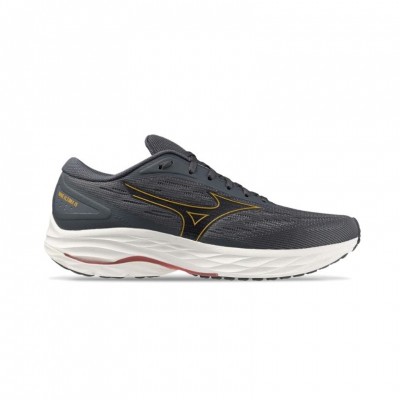You may be interested in:
The long run is one of the most characteristic types of training in preparation for middle and long distance races such as the half marathon or marathon. Although we do not necessarily have to be immersed in the training of this type of event to implement a session of this magnitude. Logically, everything has a meaning and long training sessions also pursue some purpose, which is not always the same.
Surely it is a type of session that anyone who has ever worn running shoes has tried at some time, each within their capabilities and limitations. Depending on the level, it can be longer or shorter, but as a rule it is the longest session of the weekly training plan, with a minimum duration of about 60 to 75 minutes in the most amateur athletes and can be extended up to several hours in the case of more experienced runners or those who have in mind to participate in a marathon.

So you might think that if the long run is something as simple to execute as running longer durations or distances than usual, it has no mystery. Well, you're wrong, because the lack of knowledge about the usefulness and the approach that can be given to long runs can cause us not to take full advantage of their benefits. Here are the most relevant details about long runs from RUNNEA.
What are long runs designed for?
Well, as we often say, it depends, since long runs, in addition to varying in duration, can also vary in terms of intensity, surface or type of route. What is more than proven is that it is a type of session that seeks to accustom our body to tolerate a significant volume of kilometers continuously, both physiologically and at a muscular and joint level. Not only that, but it teaches us to manage our psychology in the presence of fatigue and thoughts that can jeopardize the maintenance of the activity.
In essence, and due to their high demand, long runs are usually designed to be performed at low intensity, i.e., running at a comfortable pace throughout the session. This achieves two very important things:
Increased fat oxidation capacity, which means that, especially in long distance events, we are able to reduce the use of glycogen, being more economical and efficient.
Increased mitochondrial density, which are the cells that are responsible for generating much of the body's energy through processes in the presence of oxygen, so that in the long run we will be able to maintain a certain speed with less energy expenditure or a higher speed with the same expenditure
Controlling intensity by means of heart rate and rhythm zones or subjective perception of effort will be essential for a long run to be performed at low intensity.
5 tips for successfully completing a long run
However, although long runs are usually prescribed for running at low intensity, we can also look for another type of approach to help us improve our performance. That's why, before we finish this article, we're going to give you 5 tips for a successful long run.

Intensity
As we mentioned earlier, although they are usually performed at low intensity, long runs are also an excellent type of training to introduce the specific rhythms of competition, such as the half marathon or marathon. Therefore, establishing the phases or blocks of the session according to the intensity has to be something that should not be missing in our plan.
In other words, we must establish whether we will do the whole run at the same pace or whether we will do a warm-up, a main part and a cool-down.
If we are immersed in the preparation of a middle or long distance race, it is interesting to perform the "long run" of the first weeks or months at low intensity and allocate the last weeks to increase the intensity and run at the rhythms that we will perform in competition, so that we can know the feelings that it generates and automate the running gesture.
Weekly location
Considering that these are the sessions that are going to have more kilometers in the weekly plan, it is convenient that they are set on the day that we have more time availability. Usually it is the weekend, although some people with jobs in hospitality, health or services may have more time any day during the week.
Not only in terms of availability, but unless our or our trainer's intention is to perform them in the presence of fatigue or tiredness, we must consider that both the previous and subsequent sessions should be of low intensity or even a day of rest. Having enough muscle freshness and energy reserves to the maximum will be very important to avoid any pronounced drop in performance.
Duration or kilometers?
A very common doubt: if we have to choose one, it would be the duration, since it will allow us not to be in a hurry to finish earlier and run at a higher pace than we should, with the consequent increase in fatigue. After all, the session will last whether we go faster or slower. In addition, training with time is much more suitable for low and medium level runners, since talking about high mileage can imply the presence of mental barriers.

Even so, doing the prescribed long run in kilometers works very well in high-level or experienced athletes, as it allows better control of the training load and favors a much more specific work for future competitions, since we can perform "simulations" or "tests" based on the training and race distance.
Route
Unless we are in a non-competitive period or where we prioritize enjoyment over performance, improvisation in terms of route is something that should be avoided. That is, the fact of previously stipulating the route we are going to run analyzing the distances, slopes or the presence of traffic will allow us to find unforeseen events that alter our session.
A very common fact is that the lack of planning leads us to run through uncomfortable routes with excessive turns, unstable terrain or with too much positive slope, with the consequent effect in the decrease of our running pace and the possible frustration that can cause us, in addition to causing a greater effort to sustain the speed. One solution may be to repeat a particular course, which despite being more boring, can avoid this type of circumstance.
If your next 21k or 42k is flat, do the run on flat courses or circuits. On the contrary, if it has hills, prepare your route with ascents and descents.
Hydration and nutrition
Even if you are one of those runners who only go out to train with your heart rate monitor or cell phone and some personal belongings during the usual midweek sessions, you should not neglect hydration and nutrition in long runs, especially in those that exceed 75 minutes in duration. On the one hand, you should consider how you can ingest fluids, either by stopping at a fountain or by wearing a hydration belt or vest.
On the other hand, the intake of foods rich in carbohydrates and proteins, to a lesser extent, will allow you to maintain the intensity of your exercise because your energy reserves will not be completely depleted. The most effective measure is to take energy gels that will allow us to continue running thanks to their easy ingestion and digestion.

In addition to the fact that it is very important to determine the amount and type of isotonic drinks, mineral salts and gels that we are going to take during training and competition, their use in long runs will allow us to put into practice the race strategy in terms of periodicity and management (when and how to do it), besides being the best time to train our digestive system and avoid any unforeseen events on the day of our next marathon or half marathon.
Read more news about: Running Training






















